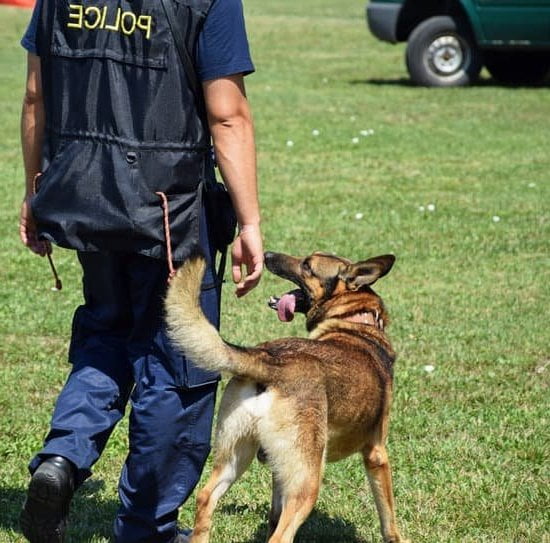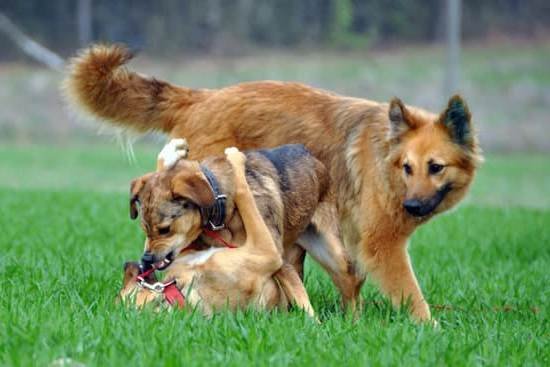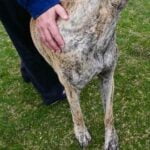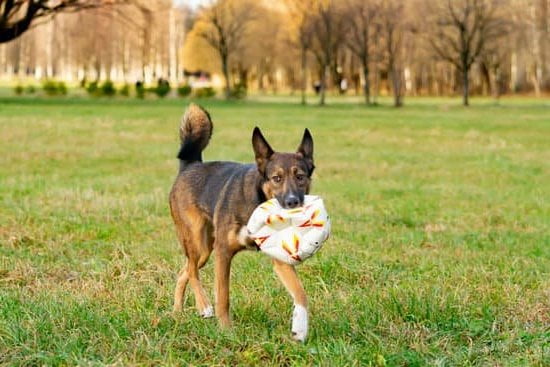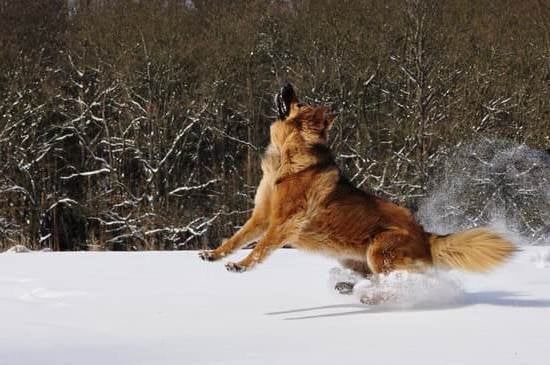Are you wondering how to train dogs to stop biting? Biting is a common issue among dogs, but it can be addressed with the right training techniques.
Understanding why dogs bite and knowing how to effectively train them is essential for a harmonious relationship between you and your furry friend. In this article, we will explore different types of dog biting behavior, socialization and bite inhibition training, positive reinforcement methods, redirecting biting behavior, providing appropriate chew toys and treats, consistency and patience in training, seeking professional help if necessary, and safety precautions for dealing with a biting dog.
Dogs may exhibit aggressive behaviors such as biting due to fear, pain, possessiveness, or to establish dominance. It’s important to recognize the underlying reasons for this behavior in order to address it effectively. By gaining insight into why dogs bite, pet owners can take proactive steps toward mitigating or eliminating this unwanted behavior.
Socialization and bite inhibition training are vital components of preventing and addressing biting in dogs. Introducing your dog to various situations and people from a young age can help them develop good social skills. Additionally, teaching them bite inhibition through positive reinforcement techniques can significantly reduce the likelihood of aggressive biting in the future. Understanding these fundamental principles is key to successfully training your dog to stop biting.
Different Types of Dog Biting Behavior
Understanding the different types of dog biting behavior is crucial in addressing and correcting this issue. Dogs may exhibit biting behavior for various reasons, including fear, aggression, playfulness, or even pain. By identifying the specific type of biting behavior, pet owners can effectively implement the right training methods to address this issue.
Fear-Based Biting
Fear-based biting occurs when a dog feels threatened or scared. This type of biting is often a defensive response to a perceived danger or stressful situation. Dogs may resort to fear-based biting when they feel cornered or when they are in unfamiliar environments. It’s important for pet owners to recognize signs of fear in their dogs and work on creating a safe and comfortable environment to reduce the likelihood of fear-based biting.
Aggressive Biting
Aggressive biting is a serious behavioral issue that requires immediate attention. This type of biting may occur due to territorial aggression, resource guarding, or dominance issues. Aggressive biting can result in severe injuries and poses a risk to both humans and other animals. Addressing aggressive biting behavior often requires professional help from a certified dog trainer or animal behaviorist.
Playful Biting
Many puppies engage in playful nipping and biting as part of their natural development and socialization process. Playful biting is usually gentle and non-threatening, but it’s important for pet owners to teach their puppies appropriate bite inhibition during playtime. Consistent training and positive reinforcement methods can help redirect playful biting behavior towards more suitable outlets such as chew toys.
Understanding the different types of dog biting behavior allows pet owners to address this issue effectively through appropriate training methods tailored to their dog’s specific needs. Whether it’s fear-based, aggressive, or playful biting, consistent and patient training combined with positive reinforcement techniques can help curb undesirable behaviors and promote a harmonious relationship between dogs and their owners.
Socialization and Bite Inhibition Training
Bite inhibition training, on the other hand, teaches a dog how to control the force of their bite. This training begins during puppyhood when dogs learn from their littermates about inhibiting their bite strength. If a puppy bites too hard during play, its littermate will yelp or stop playing, teaching the biting puppy that their behavior is unacceptable. As owners, it is important to continue this training by rewarding gentle play and discouraging rough play or biting.
In addition to socialization and bite inhibition training at home, enrolling your dog in obedience classes or working with a professional trainer can further reinforce these important skills. These classes not only provide structured socialization opportunities but also allow dogs to learn proper behavior through positive reinforcement techniques. By consistently practicing socialization and bite inhibition training, owners can help prevent unwanted biting behavior in their dogs while fostering positive interactions with people and other animals.
Positive Reinforcement Training Methods
When it comes to training dogs to stop biting, positive reinforcement methods can be effective in promoting good behavior. Positive reinforcement involves rewarding or praising your dog for exhibiting the desired behavior, which can help in discouraging biting. Here are some positive reinforcement training methods that can be used to address biting behavior:
- Reward-Based Training: Using treats, praise, or toys as rewards for good behavior can effectively train a dog to stop biting. Whenever your dog displays non-biting behavior, immediately reward them with their favorite treat or toy.
- Clicker Training: Clicker training is a form of positive reinforcement where a clicker sound is used to mark the moment your dog performs the desired behavior. This method can be helpful in teaching dogs not to bite and reinforcing other obedience commands.
- Consistency: Consistency is key when using positive reinforcement training methods. Be sure to consistently reward your dog for non-biting behavior and avoid any inconsistent responses that may confuse them.
Incorporating positive reinforcement training methods into your routine can help address biting behavior in dogs while strengthening the bond between you and your pet. Patience and consistency are essential when utilizing these techniques, and seeking professional help from a certified dog trainer may also be beneficial if needed.
Redirecting Biting Behavior
Distraction Techniques
One effective way to redirect biting behavior is through distraction techniques. If a dog begins to bite or nip, providing them with a toy or engaging them in play can shift their focus away from the undesirable behavior. This teaches the dog to associate biting with toys and playtime rather than with human hands or clothing.
Training Commands
Training commands such as “leave it” or “no bite” can also be useful in redirecting biting behavior. By using consistent and firm commands, coupled with positive reinforcement when the dog complies, they can learn to control their impulses and refrain from biting.
Time Outs
In some cases, if a dog continues to exhibit persistent biting behavior despite other redirection techniques, implementing a brief time out can be beneficial. Placing the dog in a quiet, confined space for a few minutes can help them calm down and understand that biting results in the loss of attention and playtime. It is important that this technique is used sparingly and not as punishment, but rather as an opportunity for the dog to reset its behavior.
Providing Appropriate Chew Toys and Treats
Raising a well-behaved and non-aggressive dog involves providing appropriate chew toys and treats. Chew toys play a crucial role in redirecting a dog’s biting behavior to more acceptable items. When choosing chew toys, it is essential to consider the size, texture, and durability of the toy.
Toys that are too small may pose a choking hazard, while toys that are too soft may encourage destructive chewing. Opt for toys specifically designed for chewing and durable enough to withstand your dog’s bite strength.
Moreover, offering treats during training sessions can also help discourage biting behavior in dogs. Positive reinforcement through treats can reinforce good behavior and provide an incentive for the dog to refrain from biting.
It is important to use high-quality, safe treats that are appropriate for your dog’s size and breed. Additionally, incorporating treat-dispensing toys can engage the dog’s mind and alleviate boredom, reducing the likelihood of them resorting to biting out of frustration or pent-up energy.
In addition to providing chew toys and treats, it is important to supervise your dog when they are engaged in chewing activities. Regularly inspect their chew toys for signs of wear or damage, as broken toys can become a choking hazard or cause intestinal blockages if ingested. By offering the right kind of chew toys and treats, owners can steer their dogs away from inappropriate biting behavior while promoting dental health and mental stimulation.
Consistency and Patience in Training
Consistency and patience are key elements in training dogs to stop biting. It’s important to remember that changing a dog’s behavior takes time, so it’s crucial for owners to stay committed to the training process.
Consistency is necessary to effectively communicate with the dog what behavior is acceptable and what is not. Dogs respond best to routines and consistent rules, so it’s important for all members of the household to be on the same page when training a dog.
Patience is equally important as consistency when training a dog. It requires time and effort to modify behaviors, including biting. Getting frustrated or losing patience during training sessions can confuse the dog and make the process more challenging. Successful training will depend on the handler’s ability to remain calm, patient, and positive throughout.
It is also essential for dog owners not to lose hope if progress seems slow. Not all dogs will learn at the same pace, so it’s vital to continue reinforcing good behavior while gently correcting undesirable behavior using positive methods. With consistency, patience, and perseverance, most dogs can be trained out of their biting habits given enough time.
| Training Element | Description |
|---|---|
| Consistency | Staying committed and setting clear rules for behavior. |
| Patience | Remaining calm, positive, and understanding throughout training. |
| Reinforcement | Rewarding good behavior consistently while gently correcting bad behavior. |
Seeking Professional Help if Necessary
While many dog owners can successfully train their pets to stop biting using positive reinforcement and other training methods, there are situations where professional help may be necessary. Understanding that some biting behaviors may be rooted in fear, anxiety, or aggression, seeking the help of a professional dog trainer or behaviorist can provide a more structured and specialized approach to addressing the issue. Here are some reasons why seeking professional help may be necessary:
- If a dog’s biting behavior is aggressive and poses a serious safety risk to people or other animals
- If the biting behavior does not improve despite consistent training efforts at home
- If the dog has a history of biting incidents
Professional trainers and behaviorists have the knowledge and experience to evaluate a dog’s behavior, identify triggers for biting, and develop a personalized training plan to address the problem. They can also provide guidance on how to safely manage and modify a dog’s biting behavior.
In addition, seeking professional help can also ensure that the underlying cause of the biting behavior is properly addressed. Whether it’s due to fear, anxiety, territorial aggression, or other factors, a professional can offer insights into understanding why the dog is biting and provide appropriate strategies for addressing these issues. It’s important for dog owners to prioritize safety and seek help from qualified professionals when dealing with serious biting behaviors.
Safety Precautions for Dealing With a Biting Dog
In conclusion, training a dog to stop biting requires a thorough understanding of the reasons behind their behavior and the different types of biting behavior they may exhibit. Socialization and bite inhibition training are essential in teaching dogs appropriate ways to interact with humans and other animals. Positive reinforcement methods, such as rewarding good behavior and redirecting biting tendencies, can also be effective in shaping a dog’s behavior.
Providing appropriate chew toys and treats can help satisfy a dog’s natural instinct to chew and bite, while consistency and patience are crucial in the training process. It is important for dog owners to recognize when professional help may be necessary, especially if the biting behavior is aggressive or persistent.
Furthermore, safety precautions should always be taken when dealing with a biting dog. This includes avoiding physical punishment, using protective gear if necessary, and seeking assistance from professionals who are trained in handling potentially dangerous situations. By being proactive in training and taking necessary safety measures, dog owners can effectively address biting behavior and ensure the safety of both their pet and others.
Frequently Asked Questions
How Do You Discipline a Dog to Stop Biting?
Disciplining a dog to stop biting requires consistency, patience, and positive reinforcement. When the dog starts to bite, firmly say “no” and redirect their attention to a chew toy or another suitable object.
Avoid using physical punishment as it can lead to fear and aggression in the dog. Consistent training and providing appropriate outlets for chewing can help curb the biting behavior.
Can a Dog Be Trained Out of Biting?
Yes, a dog can be trained out of biting through proper socialization, obedience training, and positive reinforcement. Teaching the dog bite inhibition from an early age is important, as well as exposing them to different people, animals, and situations to reduce fear and aggression.
Using rewards for good behavior and redirecting negative behavior can effectively train a dog out of biting.
How to Prevent a Dog From Biting You?
Preventing a dog from biting involves understanding their body language and signals that indicate discomfort or aggression. Avoid putting them in stressful situations and always supervise interactions with children or unfamiliar people.
Providing plenty of mental stimulation, exercise, and socialization can also reduce the likelihood of a dog biting out of fear or frustration. Training them to respond positively to commands like “leave it” or “drop it” can also help prevent biting incidents.

Welcome to the blog! I am a professional dog trainer and have been working with dogs for many years. In this blog, I will be discussing various topics related to dog training, including tips, tricks, and advice. I hope you find this information helpful and informative. Thanks for reading!

